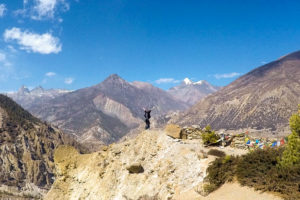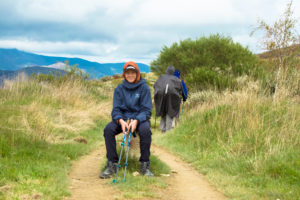How to Hike Kalaw to Inle Lake
Organizing Your Trip
This is a very popular trip and hence incredible easy to organize. Most people hop on a ~10h bus or short flight from Bagan to Kalaw, shop around for quotes from a few different agencies then off they go. The main agencies are Sam’s Family Restaurant, Ever Smile and Golden Lily Guesthouse. These agencies have many trips going out and its very easy to join up with a few other people and go on a 1 or 2 night trek. Once you’ve picked your agency the rest is pretty easy, make sure you have to right equipment and ensure your agency can transfer any extra baggage to Inle.
When I was doing this hike I was traveling with my family and since they only had a short trip and we wanted to go on a private trek we decided to book before hand. We decided to go with A1 Trekking and were very pleased. They allowed us to add an extra day and pick us up straight from the airport so we could start trekking the day we arrived. Our guide spoke excellent English and was very happy to answer all of our questions. Make sure your guide does speak English, while we didn’t have a problem on this hike a lot of our other guides in Myanmar didn’t speak English very well. I’ve since recommended A1 Trekking to a few other backpackers and have heard further good thing about them, but I thin most agencies would offer a pretty similar experience.
Once you get to Inle Lake your trekking agency with organize a boat trip to your accommodation. In Inle you have two choices – either stay in town or on one of the floating resorts. The town has more restraints, bars and things to do – particularly at night. Whereas the floating resorts require you to be back at the resort before dark as the boats cannot drive at night. That being said after trekking it was nice to have a little luxury and the resorts are pretty cool. If you can I would suggest staying most of your time in town, but try to do one night on one of the floating resorts.


What to expect?
I’ve been told its similar to hiking in Northern Thailand or Laos 15 years ago, but I’ve never done any of those hikes so I don’t know! The days are spent hiking along dirt paths in the middle of farms and the nights in cinderblock, farming villages. It is a popular hike so be expecting to see other tourists, but so far the area has done a pretty reasonable job at controlling the negative impacts of tourism. The government has increased the restrictions so tourists can only stay in registered homesteads which helps control the amount of tourists. However if you are doing the 1 night trek everyone stays in the same village on the last night so that will be significantly more crowded. I would suggest trying to do a 2 or 3 night trek in order to get the feel of some of the other villages. Other than that there was only one area that was pretty ‘touristy’ where there was women showing off and selling their hand weavings on the sides of the path. They were lovely hand weavings though.
Generally the towns and farms tourist stay in are pretty affluent, but from a Western standard would still be considered pretty basic. Expect hole in the ground toilets, cold bucket showers/baths and thin mattress in a shared room for sleeping. All of the houses are clean and the house owners are generally pretty friendly. One thing that I did not expect was the quality of the food! Each hiking group has a chef that travels ahead and prepares food for the group and it was excellent. I have never eaten so much fresh fruit in my life!

Daily fruit animals made by our chef
In terms of difficulty the hike is not too difficult. Depending on how many days you decided to trek for the distance covered per day is just over 20km. The terrain is generally rolling hills so the walking is not terribly difficult. On the last day there is a long incline up and then down in to Inle so be prepared for that. Make sure that whenever you see a bull on the path (which is more often then you’d think) you stand on the uphill side of it. They are way less likely to charge uphill than down!

Bulls are everywhere in the area – watch for children riding them!
What to bring?
As always with trekking – pack light! Particularly for this hike as it is so easy to send your extra luggage ahead to Inle. One set of cloths for the day and one for at night should be just fine. I’d suggest long, light weight pants for hiking during the day and a sweater at night. Also make sure you bring a raincoat and sunscreen. In terms of shoes I hiked in my hiking boots because I was already traveling with them, but a pair of runners is totally fine. Our guide hiked in sandals! We all fit everything into a day bag each and sent our larger bags ahead.


Trekking to Inle Lake was one of my favourite parts of my 3 weeks in Burma / Myanmar. But as always if you do choose to do this hike please make sure you’re leaving a positive (or at least neutral impact on it). Make sure you don’t encourage begging, especially in children, by handing out toys or candy. One of the best things about this hike is that you feel like you get to actually see what life for the locals is like. The area is not super Westernized yet and it is not overwhelmed by tourists dollars so locals don’t ‘fake it’ for the tourists benefit. I don’t know how long it will stay like that, but I hope it does for a long time!




